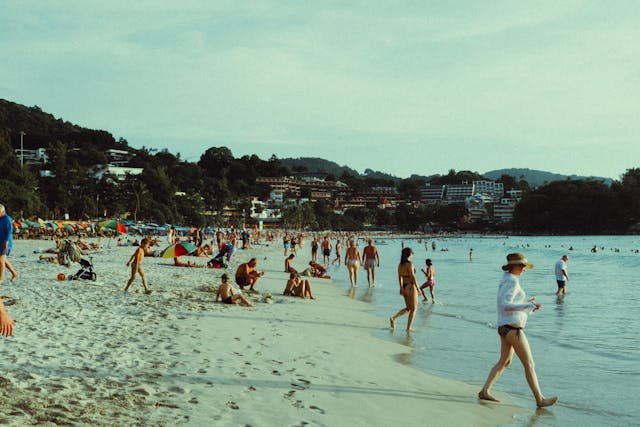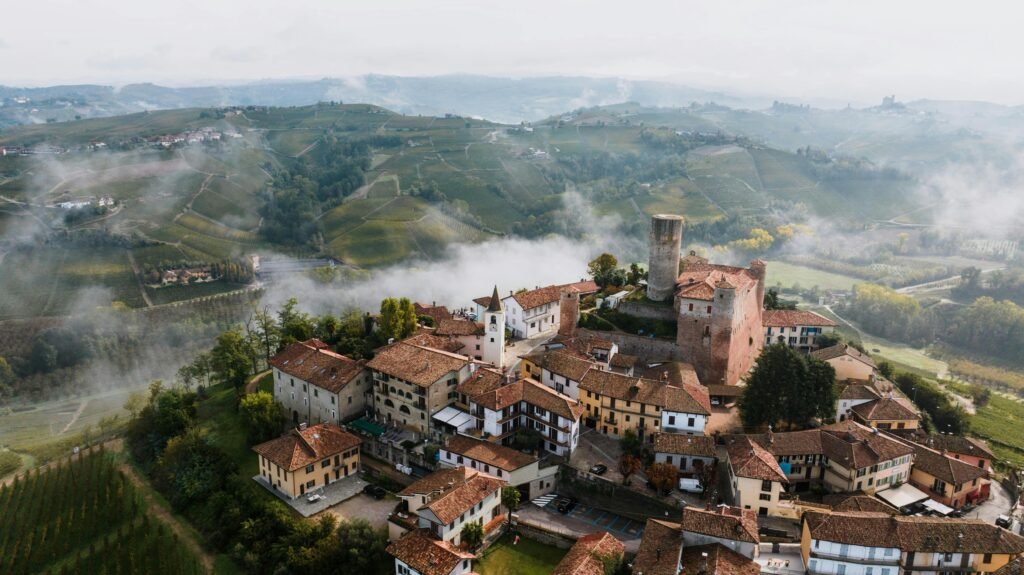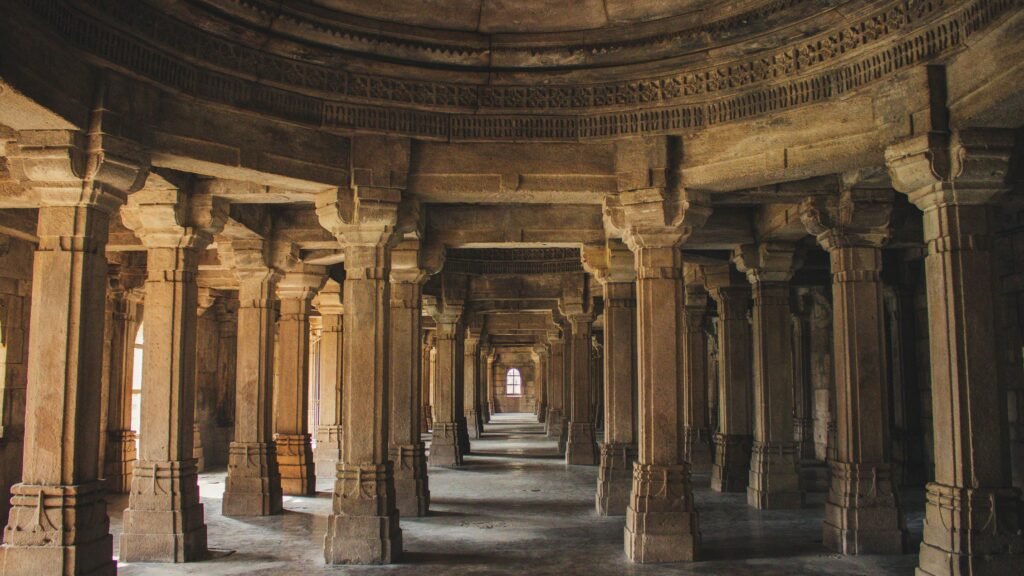Ferragosto isn’t just another public holiday – it’s a cultural phenomenon that brings families together, empties cities, and fills beaches across the peninsula.
This ancient celebration, rooted in Roman history and enriched by centuries of Christian tradition, represents the very essence of Italian summer culture.
Whether you’re planning a trip to Italy or simply curious about this fascinating holiday, you’re about to discover why August 15th holds such a special place in every Italian’s heart.
The Ancient Origins of Ferragosto
Let me take you back to 18 BC, when Emperor Augustus was running the show in Rome.
The guy was pretty smart – he noticed that after months of grueling agricultural work, his people needed a serious break.
So he established “Feriae Augusti” (Augustus’ rest), a period of festivities and rest that originally lasted from August 1st to August 15th.
The Romans weren’t just throwing random parties though.
This was strategic planning at its finest!
August was the perfect time for celebration because it fell right after the grain harvest but before the grape harvest began.
What really gets me excited about this history is how Augustus tied the holiday to the goddess Diana, protector of women and childbirth.
The timing wasn’t coincidental – many Roman women would travel to Diana’s temple during this period, seeking blessings for fertility and safe childbirth.
Christian Transformation: The Assumption of Mary
When the Catholic Church took over Ferragosto, they didn’t just slap a Christian label on a pagan holiday – they created something entirely new while respecting the old traditions.
The Assumption of Mary, celebrated on August 15th, commemorates the belief that Mary was taken up to heaven, body and soul, at the end of her earthly life.
I remember attending an Assumption Mass in a small Tuscan village a few years back.
The church was packed, the air was thick with incense, and there was this incredible sense of reverence mixed with joy.
The religious aspect of Ferragosto varies dramatically across different regions of Italy.
In the south, particularly in places like Sicily and Calabria, the religious celebrations are often more elaborate and deeply embedded in local culture.
Northern regions tend to focus more on the secular aspects, though you’ll still find beautiful processions and special masses throughout the country.
What’s really interesting is how the Church managed to preserve the essence of the Roman holiday while giving it Christian meaning.
The idea of rest, family gathering, and celebration remained central, but now it carried spiritual significance.
Mary’s assumption became a symbol of hope and renewal, perfectly suited to the late summer season when people were preparing for the approaching autumn.
Modern Ferragosto: How Italy Celebrates Today
Fast forward to modern Italy, and Ferragosto has evolved into something that’s part family reunion, part national vacation, and part cultural celebration.
If you’ve ever wondered why Italy seems to completely shut down in August, Ferragosto is your answer!
The holiday officially falls on August 15th, but let me tell you, the celebration stretches way beyond just one day.
Many Italians take the entire month of August off, or at least the weeks surrounding Ferragosto.
What really amazes me about modern Ferragosto is how it brings together people from all walks of life. Rich or poor, young or old, religious or secular – everyone participates in some way. I
The typical Italian family’s Ferragosto might start with a leisurely breakfast, followed by a trip to the beach, mountains, or countryside.
If they’re staying in the city, they might organize a massive family barbecue or picnic in a local park.
The key is being together – and trust me, when Italians say “together,” they mean the whole extended family, including cousins you haven’t seen since last year’s Ferragosto!
Many cities organized special events and festivals during the Ferragosto period.
Rome hosts outdoor concerts, Florence puts on art exhibitions, and smaller towns throughout Italy organize local festivals featuring traditional music, dancing, and food.
It’s like the entire country becomes one big celebration.
Regional Variations: Ferragosto Across Italy
Here’s where things get really interesting – every region of Italy has its own unique spin on Ferragosto.
In Rome, the celebration often centers around the Pantheon and various churches dedicated to Mary. I’ve witnessed some incredible processions through the city streets, with families carrying flowers and candles. The atmosphere is both solemn and joyful, reflecting the deep religious roots of the holiday.
Sicily takes Ferragosto to another level entirely. The island’s celebrations often include elaborate processions, traditional music, and festivals that can last for days. In Palermo, they have this amazing tradition called “U Fistinu” where the entire city seems to come alive with street food, music, and dancing.
Northern Italy, particularly in regions like Lombardy and Veneto, tends to focus more on outdoor activities and family gatherings. Many families head to the Alps for hiking and mountain picnics, or to the lakes for swimming and boating. The religious aspect is still present, but it’s often more understated.
Tuscany has some of the most beautiful Ferragosto celebrations I’ve ever seen. Small hilltop towns organize medieval festivals, complete with period costumes and traditional games. The combination of stunning landscapes and historical reenactments creates an almost magical atmosphere.
The coastal regions, especially along the Riviera and in places like Cinque Terre, become absolutely packed during Ferragosto. Beaches that are usually peaceful suddenly transform into massive family gatherings, with multiple generations sharing umbrellas, food, and stories.
What really strikes me about these regional variations is how they reflect the incredible diversity of Italian culture. While the core elements of Ferragosto remain consistent – family, food, and celebration – each region adds its own flavor based on local history, geography, and traditions.
Beach Culture and Exodus: The Great Italian Migration
Every year around Ferragosto, Italy experiences what locals call “l’esodo” – the exodus. It’s like watching an entire nation pick up and move to the beach for two weeks.
The beach culture during Ferragosto is something to behold.
Italian families don’t just go to the beach – they establish temporary kingdoms.
They arrive with elaborate umbrellas, comfortable chairs, coolers full of food, and enough supplies to last for days.
These aren’t quick beach trips; they’re extended family camps.
The social aspect of Ferragosto beach is incredible.
Popular beach destinations like Rimini, Viareggio, and the Amalfi Coast see their populations multiply during Ferragosto.
Hotels that are reasonably priced the rest of the year suddenly become luxury accommodations, and restaurants extend their hours to accommodate the massive crowds.
Mountain destinations also experience their own version of the exodus. Families from hot southern regions often head north to the Alps or Dolomites for cooler weather and hiking opportunities. Lake resorts in northern Italy become incredibly popular, offering a compromise between beach culture and mountain freshness.
The transportation infrastructure of Italy gets tested to its limits during Ferragosto.
Trenitalia (the national railway) adds extra trains, highways implement special traffic management systems, and airports see some of their busiest days of the year.
Planning Your Ferragosto Experience
If you’re thinking about experiencing Ferragosto in Italy, you need to plan carefully.
First, book everything early. I’m talking months in advance. Hotels, restaurants, train tickets, rental cars – everything gets booked up faster than you can say “Buon Ferragosto.”
I learned this lesson the hard way when I tried to find a hotel room in Florence two weeks before the holiday. The cheapest option I could find was a hostel bed for €200 per night!
Choose your location wisely. If you want to experience authentic Italian family culture, smaller towns and villages often provide more intimate celebrations.
Big tourist cities can feel overcrowded and commercialized during Ferragosto.
But if you want to see grand processions and elaborate festivals, major cities might be your best bet.
Embrace the chaos. Ferragosto is not about efficiency or quiet contemplation. It’s about joy, family, and celebration. The crowds, the noise, the excitement – that’s all part of the experience.
If you’re looking for a peaceful, relaxing vacation, maybe choose a different time to visit Italy.
Pack accordingly. August in Italy is hot and humid, especially in the south. If you’re planning to attend religious ceremonies, make sure you have appropriate attire that covers shoulders and knees.
Learn some key phrases. While many Italians speak English, knowing basic Italian phrases will enhance your experience tremendously. “Buon Ferragosto” (Happy Ferragosto) is essential, and phrases like “Dove si celebra?” (Where is the celebration?) can help you find local events.



